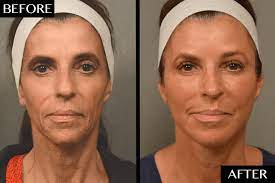There are some risks associated with facial fat transfer. Some patients may experience swelling and bruising. Some patients may lose up to 50-60% of the initial volume of fat injected, meaning a touch-up procedure may be necessary. Bleeding is rare but can occur. There may also be minor asymmetry. This is a result of fat transfer, since no two sides are exactly the same.
Table of Contents
Seroma
A facial fat grafting transfer is a surgical procedure to add facial volume. However, the procedure is not without risks. It can cause scarring and loss of volume. Some patients may also experience altered sensation and numbness following the procedure. Bleeding may also occur. Fortunately, this type of surgery does not require general anesthesia. Although small scars are sometimes seen at the site of injection, they are rare.
Patients may experience mild discomfort following the procedure, which can usually be managed with prescribed medication. The area of injection may be numb for several days following the procedure. Additionally, patients may experience bleeding, bruising, and infection. There is also a small risk of facial asymmetry. The procedure can last between one and five hours, depending on the size of the area being treated.
Fat embolism
Although facial fat grafting in cost is generally considered safe, a potential side effect is fat embolism. This condition occurs when the fat is injected into a blood vessel in the face. The fat may travel against the normal flow of blood, and can lodge in the internal or external carotid artery. This condition can result in pulmonary arterial hypertension and CVT symptoms. Fortunately, the risks associated with this procedure are rare and treatable.
While the risk of fat embolism is low, it should not be ignored. If you have any symptoms, contact your doctor right away. Fat embolism is a serious medical emergency and can cause life-threatening complications. Symptoms include dizziness, difficulty breathing, and weakness.
Liposuction complications
Facial fat transfer in Mumbai is a procedure where surgeons use harvested fat from the patient’s own body to enhance the appearance of problem areas. The transplanted fat can tighten the skin and add volume to the face. Once the patient has recovered from the procedure, the new tissue becomes permanent.
Facial fat transfer is a safe and effective way to restore lost volume in the face. It uses the body’s own fat cells for the procedure and has minimal risks. However, there are still possible complications, such as infection, bleeding, scarring, and changes in sensitivity. The risks associated with the procedure are discussed in detail during the consultation.
The procedure itself involves local anesthesia and/or oral sedation. A small incision is made in the donor area. A cannula is then inserted, a thin hollow tube connected to a vacuum. The fat cells are then sucked out and spun in a centrifuge. They are then purified and transferred to smaller cannulas. The procedure may require multiple cannulas.
Bruising
A common side effect of facial fat transfer in India is bruising, which is expected to occur after the procedure. However, bruising is usually minor and can be managed by a cold compress. There is also a small risk of bleeding after the procedure, although this is rare. After the procedure, you will need to remain at home for several days. You will also experience numbness in the affected areas. After this, the swelling will go down and you will be able to return to your normal activities.
During the procedure, a local anaesthetic is used to numb the areas being treated. This anaesthetic contains adrenaline, which constricts blood vessels and minimizes bruising. The surgeon will then use fine micro cannulas to inject the fat. This process requires the fat to be spread evenly and smoothly to ensure the best outcome. Bruising is normal and may only occur if the fat isn’t spread evenly.
Scarring
Scarring is a risk of facial fat-transfer surgery, but it’s one that may be minimized with proper postoperative care. This procedure uses processed fat from a patient’s own body to add volume to the face. The procedure is called microlipoinjection, and it is performed by using a tiny needle to extract fat cells from one part of the body and inject them into another. The result is a more natural-looking face.
Conclusion
Although a potential risk of facial fat transfer, it is minimal compared to other cosmetic surgeries. This procedure is safe and effective for many people. It is a great way to add volume to a face that is depressed and sagging. It can also help improve skin texture, repair scarring, and improve facial contouring. Patients should discuss their goals and concerns with their surgeon before the procedure.

